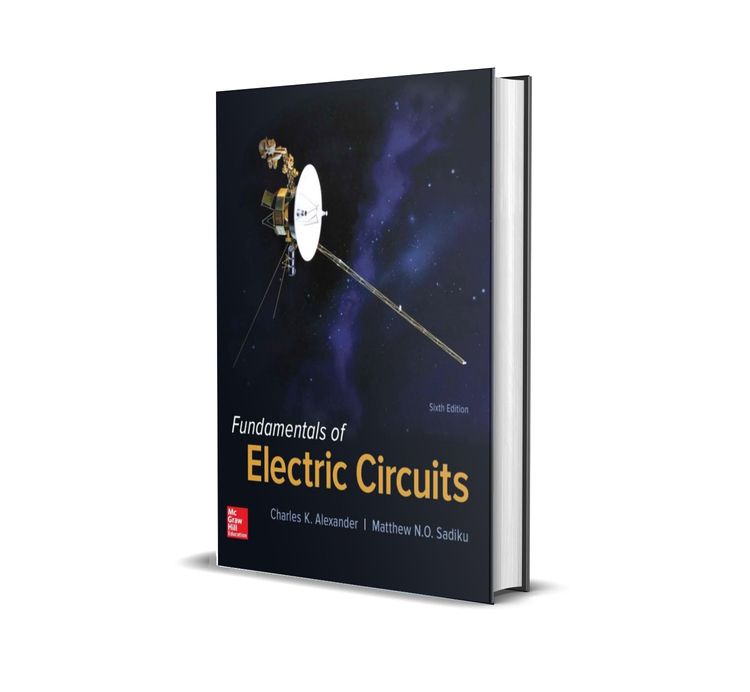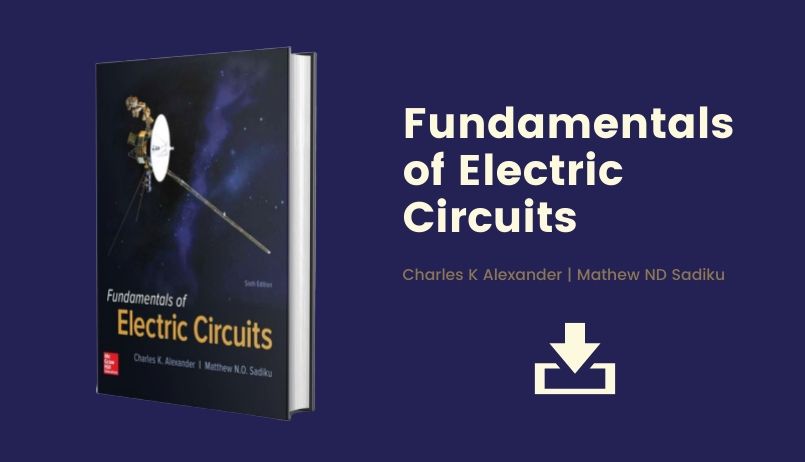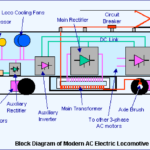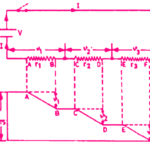A course in circuit analysis is perhaps the first exposure students have to electrical engineering. This is also a place where we can enhance some of the skills that they will later need as they learn how to design.
An important part of this book is our 121 design a problem problems.
These problems were developed to enhance skills that are an important part of the design process. We know it is not possible to fully develop a student’s design skills in a fundamental course like circuits.
To fully develop design skills a student needs a design experience normally reserved for their senior year. This does not mean that some of those skills cannot be developed and exercised in a circuits course.

A very important advantage to our textbook, we have a total of 2,481 Examples, Practice Problems, Review Questions, and End-of-Chapter Problems! Answers are provided for all practice problems and the odd numbered end-of-chapter problems.
Watch Electrical Circuit Analysis Video Course for FREE
Contents of Fundamentals of Electric Circuits
PART 1 : DC Circuits
| Chapter 1 Basic Concepts 1.1 Introduction 4 1.2 Systems of Units 5 1.3 Charge and Current 6 1.4 Voltage 9 1.5 Power and Energy 10 1.6 Circuit Elements 14 1.7 Applications 16 1.7.1 TV Picture Tube 1.7.2 Electricity Bills 1.8 Problem Solving 19 1.9 Summary 22 Review Questions 23 Problems 24 Comprehensive Problems 26 |
Chapter 2 Basic Laws 2.1 Introduction 30 2.2 Ohm’s Law 30 2.3 Nodes, Branches, and Loops 35 2.4 Kirchhoff’s Laws 37 2.5 Series Resistors and Voltage Division 43 2.6 Parallel Resistors and Current Division 44 2.7 Wye-Delta Transformations 51 Delta to Wye Conversion Wye to Delta Conversion 2.8 Applications 57 2.8.1 Lighting Systems 2.8.2 Design of DC Meters 2.9 Summary 63 Review Questions 64 Problems 65 Comprehensive Problems 77 |
| Chapter 3 Methods of Analysis 3.1 Introduction 80 3.2 Nodal Analysis 80 3.3 Nodal Analysis with Voltage Sources 86 3.4 Mesh Analysis 91 3.5 Mesh Analysis with Current Sources 96 3.6 Nodal and Mesh Analyses by Inspection 98 3.7 Nodal Versus Mesh Analysis 102 3.8 Circuit Analysis with PSpice 103 3.9 Applications: DC Transistor Circuits 105 3.10 Summary 110 Review Questions 111 Problems 112 Comprehensive Problem 124 |
Chapter 4 Circuit Theorems 125 4.1 Introduction 126 4.2 Linearity Property 126 4.3 Superposition 128 4.4 Source Transformation 133 4.5 Thevenin’s Theorem 137 4.6 Norton’s Theorem 143 4.7 Derivations of Thevenin’s and Norton’s Theorems 147 4.8 Maximum Power Transfer 148 4.9 Verifying Circuit Theorems with PSpice 150 4.10 Applications 153 4.10.1 Source Modeling 4.10.2 Resistance Measurement 4.11 Summary 158 Review Questions 159 Problems 160 Comprehensive Problems 171 |
| Chapter 5 Operational Amplifiers 173 5.1 Introduction 174 5.2 Operational Amplifiers 174 5.3 Ideal Op Amp 178 5.4 Inverting Amplifier 179 5.5 Noninverting Amplifier 181 5.6 Summing Amplifier 183 5.7 Difference Amplifier 185 5.8 Cascaded Op Amp Circuits 189 5.9 Op Amp Circuit Analysis with PSpice 192 5.10 Applications 194 5.10.1 Digital-to-Analog Converter 5.10.2 Instrumentation Amplifiers 5.11 Summary 197 Review Questions 199 Problems 200 Comprehensive Problems 211 |
Chapter 6 Capacitors and Inductors 213 6.1 Introduction 214 6.2 Capacitors 214 6.3 Series and Parallel Capacitors 220 6.4 Inductors 224 6.5 Series and Parallel Inductors 228 6.6 Applications 231 6.6.1 Integrator 6.6.2 Differentiator 6.6.3 Analog Computer 6.7 Summary 238 Review Questions 239 Problems 240 Comprehensive Problems 249 |
| Chapter 7 First-Order Circuits 251 7.1 Introduction 252 7.2 The Source-Free RC Circuit 253 7.3 The Source-Free RL Circuit 257 7.4 Singularity Functions 263 7.5 Step Response of an RC Circuit 271 7.6 Step Response of an RL Circuit 278 7.7 First-Order Op Amp Circuits 282 7.8 Transient Analysis with PSpice 287 7.9 Applications 291 7.9.1 Delay Circuits 7.9.2 Photoflash Unit 7.9.3 Relay Circuits 7.9.4 Automobile Ignition Circuit 7.10 Summary 297 Review Questions 298 Problems 299 Comprehensive Problems 309 |
Chapter 8 Second-Order Circuits 311 8.1 Introduction 312 8.2 Finding Initial and Final Values 313 8.3 The Source-Free Series RLC Circuit 317 8.4 The Source-Free Parallel RLC Circuit 324 8.5 Step Response of a Series RLC Circuit 329 8.6 Step Response of a Parallel RLC Circuit 334 8.7 General Second-Order Circuits 337 8.8 Second-Order Op Amp Circuits 342 8.9 PSpice Analysis of RLC Circuits 344 8.10 Duality 348 8.11 Applications 351 8.11.1 Automobile Ignition System 8.11.2 Smoothing Circuits 8.12 Summary 354 Review Questions 355 Problems 356 Comprehensive Problems 365 |
PART 2 : AC Circuits
| Chapter 9 Sinusoids and Phasors 9.1 Introduction 368 9.2 Sinusoids 369 9.3 Phasors 374 9.4 Phasor Relationships for Circuit Elements 383 9.5 Impedance and Admittance 385 9.6 Kirchhoff’s Laws in the Frequency Domain 387 9.7 Impedance Combinations 388 9.8 Applications 394 9.8.1 Phase-Shifters 9.8.2 AC Bridges 9.9 Summary 400 Review Questions 401 Problems 401 Comprehensive Problems 409 |
Chapter 10 Sinusoidal Steady-State Analysis 10.1 Introduction 412 10.2 Nodal Analysis 412 10.3 Mesh Analysis 415 10.4 Superposition Theorem 419 10.5 Source Transformation 422 10.6 Thevenin and Norton Equivalent Circuits 424 10.7 Op Amp AC Circuits 429 10.8 AC Analysis Using PSpice 431 10.9 Applications 435 10.9.1 Capacitance Multiplier 10.9.2 Oscillators 10.10 Summary 439 Review Questions 439 Problems 441 |
| Chapter 11 AC Power Analysis 11.1 Introduction 456 11.2 Instantaneous and Average Power 456 11.3 Maximum Average Power Transfer 462 11.4 Effective or RMS Value 465 11.5 Apparent Power and Power Factor 468 11.6 Complex Power 471 11.7 Conservation of AC Power 475 11.8 Power Factor Correction 479 11.9 Applications 481 11.9.1 Power Measurement 11.9.2 Electricity Consumption Cost 11.10 Summary 486 Review Questions 488 Problems 488 Comprehensive Problems 498 |
Chapter 12 Three-Phase Circuits 12.1 Introduction 502 12.2 Balanced Three-Phase Voltages 503 12.3 Balanced Wye-Wye Connection 507 12.4 Balanced Wye-Delta Connection 510 12.5 Balanced Delta-Delta Connection 512 12.6 Balanced Delta-Wye Connection 514 12.7 Power in a Balanced System 517 12.8 Unbalanced Three-Phase Systems 523 12.9 PSpice for Three-Phase Circuits 527 12.10 Applications 532 12.10.1 Three-Phase Power Measurement 12.10.2 Residential Wiring |
| Chapter 13 Magnetically Coupled Circuits 13.1 Introduction 554 13.2 Mutual Inductance 555 13.3 Energy in a Coupled Circuit 562 13.4 Linear Transformers 565 13.5 Ideal Transformers 571 13.6 Ideal Autotransformers 579 13.7 Three-Phase Transformers 582 13.8 PSpice Analysis of Magnetically Coupled Circuits 584 13.9 Applications 589 13.9.1 Transformer as an Isolation Device 13.9.2 Transformer as a Matching Device 13.9.3 Power Distribution 13.10 Summary 595 Review Questions 596 Problems 597 Comprehensive Problems 609 |
Chapter 14 Frequency Response 14.1 Introduction 612 14.2 Transfer Function 612 14.3 The Decibel Scale 615 14.4 Bode Plots 617 14.5 Series Resonance 627 14.6 Parallel Resonance 632 14.7 Passive Filters 635 14.7.1 Low-Pass Filter 14.7.2 High-Pass Filter 14.7.3 Band-Pass Filter 14.7.4 Band-Stop Filter 14.8 Active Filters 640 14.8.1 First-Order Low-Pass Filter 14.8.2 First-Order High-Pass Filter 14.8.3 Band-Pass Filter 14.8.4 Band-Reject (or Notch) Filter 14.9 Scaling 646 14.9.1 Magnitude Scaling 14.9.2 Frequency Scaling 14.9.3 Magnitude and Frequency Scaling |
PART 3 Advanced Circuit Analysis
| Chapter 15 Introduction to the Laplace Transform 15.1 Introduction 674 15.2 Definition of the Laplace Transform 675 15.3 Properties of the Laplace Transform 677 15.4 The Inverse Laplace Transform 688 15.4.1 Simple Poles 15.4.2 Repeated Poles 15.4.3 Complex Poles 15.5 The Convolution Integral 695 15.6 Application to Integro differential Equations 703 15.7 Summary 706 Review Questions 706 Problems 707 |
Chapter 16 Applications of the Laplace Transform 16.1 Introduction 714 16.2 Circuit Element Models 715 16.3 Circuit Analysis 720 16.4 Transfer Functions 724 16.5 State Variables 728 16.6 Applications 735 16.6.1 Network Stability 16.6.2 Network Synthesis 16.7 Summary 743 Review Questions 744 Problems 745 Comprehensive Problems 756 |
| Chapter 17 The Fourier Series 757 17.1 Introduction 758 17.2 Trigonometric Fourier Series 759 17.3 Symmetry Considerations 766 17.3.1 Even Symmetry 17.3.2 Odd Symmetry 17.3.3 Half-Wave Symmetry 17.4 Circuit Applications 776 17.5 Average Power and RMS Values 780 17.6 Exponential Fourier Series 783 17.7 Fourier Analysis with PSpice 789 17.7.1 Discrete Fourier Transform 17.7.2 Fast Fourier Transform 17.8 Applications 795 17.8.1 Spectrum Analyzers 17.8.2 Filters 17.9 Summary 798 Review Questions 800 Problems 800 Comprehensive Problems 809 |
Chapter 18 Fourier Transform 811 18.1 Introduction 812 18.2 Definition of the Fourier Transform 812 18.3 Properties of the Fourier Transform 818 18.4 Circuit Applications 831 18.5 Parseval’s Theorem 834 18.6 Comparing the Fourier and Laplace Transforms 837 18.7 Applications 838 18.7.1 Amplitude Modulation 18.7.2 Sampling 18.8 Summary 841 Review Questions 842 Problems 843 Comprehensive Problems 849 |
| Chapter 19 Two-Port Networks 19.1 Introduction 852 19.2 Impedance Parameters 853 19.3 Admittance Parameters 857 19.4 Hybrid Parameters 860 19.5 Transmission Parameters 865 19.6 Relationships Between Parameters 870 19.7 Interconnection of Networks 873 19.8 Computing Two-Port Parameters Using PSpice 879 19.9 Applications 882 19.9.1 Transistor Circuits 19.9.2 Ladder Network Synthesis 19.10 Summary 891 Review Questions 892 Problems 892 Comprehensive Problem 903 |
Objective of this Book
The main objective of the sixth edition of this book remains the same as the previous editions—to present circuit analysis in a manner that is clearer, more interesting, and easier to understand than other circuit textbooks, and to assist the student in beginning to see the “fun” in engineering. This objective is achieved in the following ways:
• Chapter Openers and Summaries
Each chapter opens with a discussion about how to enhance skills which contribute to successful problem solving as well as successful careers or a career-oriented talk on a sub discipline of electrical engineering. This is followed by an introduction that links the chapter with the previous chapters and states the chapter objectives. The chapter ends with a summary of key points and formulas.
• Problem-Solving Methodology
Chapter 1 introduces a six-step method for solving circuit problems which is used consistently throughout the book and media supplements to promote best-practice problem-solving procedures.
• Student-Friendly Writing Style
All principles are presented in a lucid, logical, step-by-step manner.
As much as possible, we avoid wordiness and giving too much detail that could hide concepts and impede overall understanding of the material.
• Boxed Formulas and Key Terms
Important formulas are boxed as a means of helping students sort out what is essential from what is not. Also, to ensure that students clearly understand the key elements of the subject matter, key terms are defined and highlighted.
Margin Notes
Marginal notes are used as a pedagogical aid. They serve multiple uses such as hints, cross-references, more exposition, warnings, reminders not to make some particular common mistakes, and problemsolving insights.
• Worked Examples
Thoroughly worked examples are liberally given at the end of every section. The examples are regarded as a part of the text and are clearly explained without asking the reader to fill in missing steps.
Thoroughly worked examples give students a good understanding of the solution process and the confidence to solve problems themselves.
Some of the problems are solved in two or three different ways to facilitate a substantial comprehension of the subject material as well as a comparison of different approaches.
• Practice Problems
To give students practice opportunity, each illustrative example is immediately followed by a practice problem with the answer. The student can follow the example step-by-step to aid in the solution of the practice problem without flipping pages or looking at the end of the book for answers. The practice problem is also intended to test a student’s understanding of the preceding example. It will reinforce their grasp of the material before the student can move on to the next section. Complete solutions to the practice problems are available to students on the website.
• Application Sections
The last section in each chapter is devoted to practical application aspects of the concepts covered in the chapter. The material covered in the chapter is applied to at least one or two practical problems or devices. This helps students see how the concepts are applied to real-life situations.
• Review Questions
Ten review questions in the form of multiple-choice objective items are provided at the end of each chapter with answers. The review questions are intended to cover the little “tricks” that the examples and end-of-chapter problems may not cover. They serve as a self test device and help students determine how well they have mastered the chapter.
Organization of this Book
This book was written for a two-semester or three-quarter course in linear circuit analysis. The book may also be used for a one-semester course by a proper selection of chapters and sections by the instructor. It is broadly divided into three parts.
Part 1, consisting of Chapters 1 to 8, is devoted to dc circuits. It covers the fundamental laws and theorems, circuits techniques, and passive and active elements.
Part 2, which contains Chapter 9 to 14, deals with ac circuits. It introduces phasors, sinusoidal steady-state analysis, ac power, rms values, three-phase systems, and frequency response.
Part 3, consisting of Chapters 15 to 19, are devoted to advanced techniques for network analysis. It provides students with a solid introduction to the Laplace transform, Fourier series, Fourier transform, and two-port network analysis.
The material in the three parts is more than sufficient for a two-semester course, so the instructor must select which chapters or sections to cover.
Sections marked with the dagger sign (†) may be skipped, explained briefly, or assigned as homework. They can be omitted without loss of continuity. Each chapter has plenty of problems grouped according to the sections of the related material and diverse enough that the instructor can choose some as examples and assign some as homework.
Download
Click the download link below.
[the_ad id=”1319″]






Great information in this article.